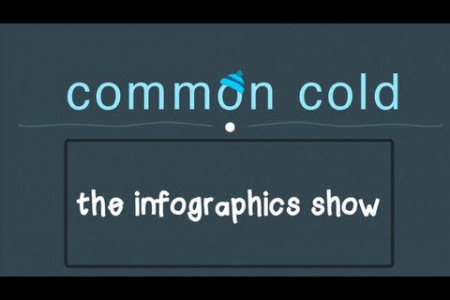
Ross Sea marine preserve possibility
Argentina ATLANTIC OCEAN Saving to see change ANTARCTICA Antarctica Ross Ice Shelf About the size of France, Ross Sea By MOLLY ZISK/ORANGE COUNTY REGISTER the shelf is roughly 2,200 feet thick. Like many icebergs, the shelf is 90% under water, Commission for the Conservation of PACIFIC OCEAN The Antarctic Ocean Alliance proposes a marine reserve for Antarctica's Ross Sea. A biodiversity hot spot because of the shallow continental shelf, the Ross Sea is home to a wide variety of marine life. However, man's recent intrusion in the area is Antarctic Marine Living Resources, comprises 14 nations and the EU, and has proposed a Ross Sea Marine Preserve Area with a 'no take"zone. In New Zealand Australia threatening the natural balance. Fishing for the Antarctic toothfish has increased since the mid 1990s and scientists are studying the effects of over fishing a top predator on the Antarctica food web. OProposed Marine Protected area Shelf: up to 1600 feet deep October, members of the commission failed to ratify the agreement. Amundsen Plain 14.000 feet deep McMurdo Why it matters Slope: up to 4,900 feet deep Pacific Antarctic ridge The Antarctic Ocean Alliance wants the area preserved for long-term scientific study. Seamounts Scientists have collected data around the 1840s and have continuous records going back more than 50 years. Having reliable data for long periods of time helps scientists to draw more accurate conclusions and better understand emvironmental and ecological changes, particularly in the field of climate research. Toothfish catches Pacific-Antarctic Ridge Teeming with life Beljeny Islands The Ross Sea is home to an amazing diversity of marine life including: 10 mammal species, 95 fish species, more than 1,000 invertebrate species and half a dozen species of birds. The ecosystem has Home to a large percentage of some marine species Antarctic minke whales 6% Emperor penguins ROSS SEA ---- A Continental shelr | 26% 30% 38% Continental slope Antarctic petrels remained intact because of limited human interaction. The continental shelf food web is in a state similar to that of the past millennia. Adélie penguins South Pacific Weddell seals Ross Sea killer whales 45% 50% Underwater variety The Ross Ice Shelf extends out over the continental shelf which drops off several thousand feet. The variety of undersea depths combined with several currents creates an ideal environment for life as small as krill up to several species of whales. Antarctic food web A food web is a complex network of food chains and feeding relationships. Weddell seal Killer whale Emperor penguin 240.000 Adélie penguin 3 million Antarctic petrel Weddell seal 30,000 to 50,000 Antarctic petrel 55 million At the base of the web are the primary producers, microorganisms that can make their own food. Emperor репguin Killer whale 3,400 Snow petrel I million Moving into the web are small creatures that feed on the Antarctic toothfish Adeli producers and in turn feed the larger predators. SPenguin Toothfish feed on icefish, eel cods and squid. Krill Cod, squid, silvertish Continental shelf shelters penguins, fish and crustaceans Crabeater seal 204,000 Antarctic minke whale 21.000 In turn, Weddell seals and killer whales prey on the toothfish. Removing one predator allows other species to propogate, putting pressure on species further down the web. Microorganisms Antarctic toothfish Seamounts are home to a diverse ecosystem. Tons of toothfish caught Commercial fishing began in the late 1990s and soon around 3,000 tons of Antarctic toothfish were being caught annually. 70 percent of the total catches Valuable catch The Antarctic toothfish is endemic to the Antarctic continental shelf Antarctic toothfish. Dissostichus have been taken from the continental slope, going as deep as 4,900 feet. mawsoni, grows slowly and can live for up to 50 years with the males maturing at 13 years and females at 17 years. and a key predator in the region's food web. They are highly prized by the commercial fishing industry and marketed in the United States as Chilean sea bass. Commercial fishing has already disrupted the ecological balance in the Ross Sea. 3479 3,483 3438 3516 A toothfish can grow in excess of 6 feet in Total reporled catch in tons length and almost 300 2,184 Adult toothfish have pounds in weight. about 55 teeth. 1805 1,325 A unique environment 751 660 296 The Ross Sea is a generally shallow marine region that extends across the continent before plunging into the Southeast Pacific Basin. There are two currents that encircle Antarctica that create upwellings. The nutrient-rich sea water supports abundant planktonic life which in turn provides food for larger fish like the toothfish. 42 97/98 99/00 '01/02 03/04 05/06 "07/08 Ice shelf A coastal current flows to ROSS SEA A circumpolar current flows to the east. 2.000 feet 3) the west around Antarctica. 2,000 Sea mount Continental shelf extends over 550 miles in some areas 4,000 4000 Where the coastal and circumpolar currents meet is an area of upwelling that brings nutrient rich waters to the surface. This is 6.000 Toothfish life cycle Pacific-Antarctic Ridge 6.000 Scientists hypothesize from tagged fish that there are three stages to development. larvae, small juveniles and adult. 8,000 8,000 Frigid The waters of the Ross Sea are 28.8e one reason the Ross Sea has such abundant marine life. 1 Toothfish spawn mainly near the seamonts to the northwest of Ross Sea shelf. Fahrenheit. The depths remain unfrozen because the ocean's salty water lowers the freezing point. 10,000 10.000 2 Eggs and larvae are pushed by currents towards the continental shelf. 3 Juveniles live in the shailow waters of the continental shelf. 4 As fish mature, they move out to deeper waters to spawn. 12.000 12.000 Slepe drops over 8,000 feet 14,000 Amundsen Plain 14,000 16.000 Sources The Last Ocean, British Antarctic Survey, Commission for the Conservation of Antarctic Marine Living Resources "The Case for a Ross Sea Marine Reserve": The Pew Charitable Trusts; firms.fao.org/tirms/tishery/345/en; firmsfao.org/tirms/lishery/465/er GOUTHERN OCEAN
Ross Sea marine preserve possibility
Source
http://files...eShelf.pdfCategory
EnvironmentGet a Quote








